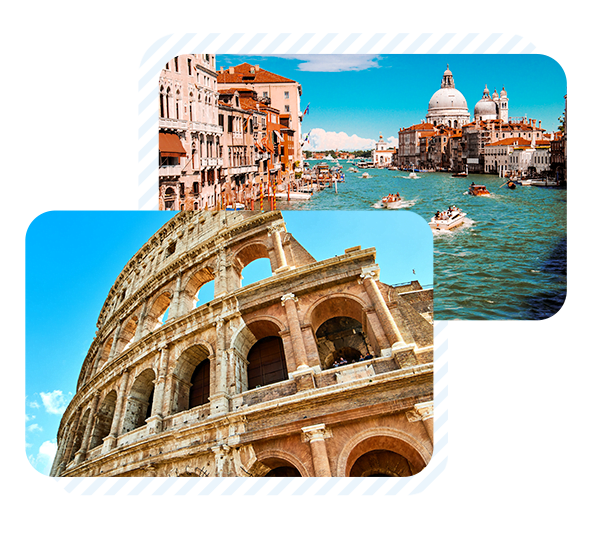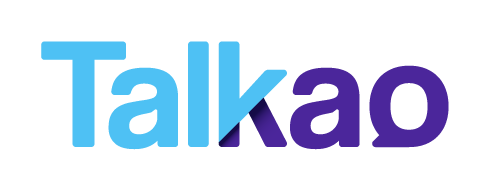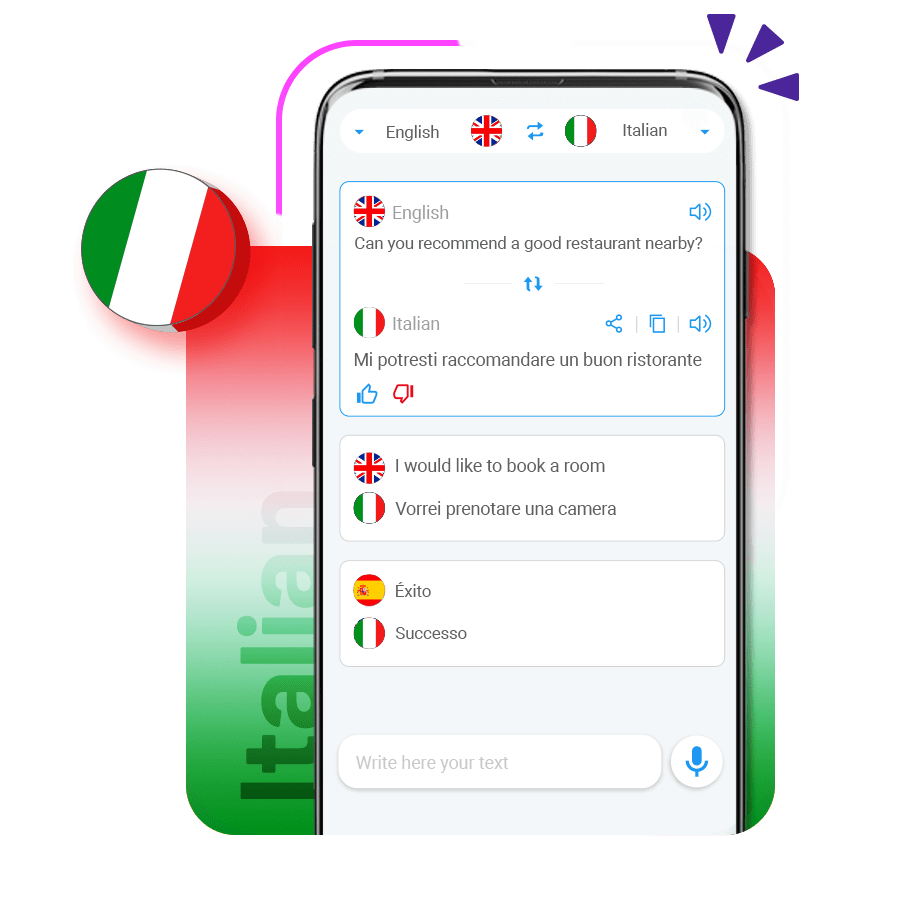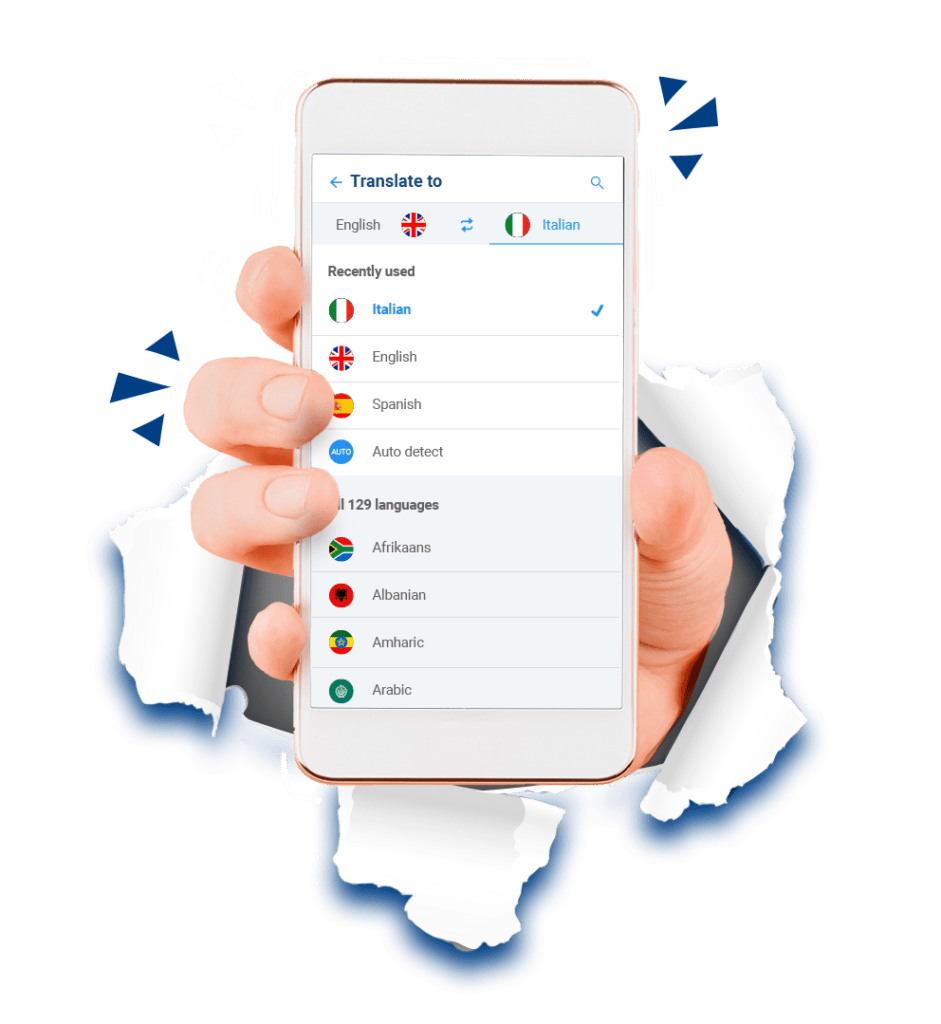Why is it important to be able to translate into the Italian language?

Where is it spoken?
Italy – Switzerland (Ticino and Graubünden) – San Marino – Vatican City – Croatia (Istria) – Slovenia (Istria)

Nº of speakers
85 million

Linguistic family
Indo-European – Italic – Romance
The Italian language has a strong cultural heritage and is widely used within various industries and fields of knowledge.
Although many may associate Italy with art, literature, and design due to the likes of Michelangelo, Dante Alighieri, and Armani, the Italian language has a global presence that transcends its borders.
Translating into Italian offers more than just access to this vast heritage. It connects with Italian-speaking communities worldwide and opens doors to new markets and audiences.
Moreover, the Italian language resonates in regions spanning Switzerland, Croatia, Slovenia and beyond.
These regions, steeped in history and tradition, contribute substantially to the enrichment of the language. Mastering Italian and translating it offers a profound experience, enabling genuine interactions and understanding of the diverse cultures and traditions tied to the language.
Professionally, Italian language is utilized in various industries, including fashion and automobiles, not limited to Italy but also in multinational companies and sectors.
The language’s global significance is proven by being the fourth most studied language in the world, reinforcing its relevance and value beyond the academic realm.
Translating or learning Italian is an essential tool for exchanging ideas, collaborating and exploring opportunities in international context.

The most translated languages into Italian language
Learn to speak in Italian language like a true native
Basic expressions in Italian
Vorrei prenotare una camera.
I would like to book a room.
Mi potresti raccomandare un buon ristorante nelle vicinanze?
Can you recommend a good restaurant nearby?
Potresti suggerirmi dei luoghi d’interesse da visitare in questa città?
Could you suggest places of interest to visit in this city?
Advanced vocabulary
| Meriggiare | Rest at midday |
| Ghirigoro | Doodle, filigree |
| Innamorato | In love, lover |
| Stralunato | Moonstruck, absent-minded |
| Zuzzurellone | Lazy person, slacker |
Other facts about the Italian language
- Latin origin: Latin origin: Italian bears the closest resemblance to Latin of all Romance languages in terms of vocabulary and structure.
- Dialects: Italy boasts over 30 dialects, with some, like Sardinian or Sicilian, being so distinct that standard Italian speakers may struggle to comprehend them.
- Letter “k”: The letters “k”, “j”, “w”, “x” and “y” aren’t in the traditional Italian alphabet. They’re only employed for foreign words.
- Double Consonant: It’s vital to pronounce double consonants correctly in Italian. For example, “pala” means spades in Italian, but “palla” means ball.
- Gestures: Italians often use hand signals when talking, using over 250 different ones.
- Agreement: Italian adjectives need to match the gender and number of the noun being modified.
- Food and Articles: Italians use the definite article when referring to food, for instance saying “il caffè” instead of simply “caffè”.
- Opera Language: Opera terms like “soprano” and “basso” come from Italian.
- Unique Words: Italian has some words that can’t be translated directly to other languages, like “culaccino” describing a wet glass’ mark on a surface.
- Linguistic Academies: The “Accademia della Crusca” is Italy’s primary organization for overseeing the Italian language, and it is the most ancient linguistic academy worldwide.
- Lingua Toscana: Standard Italian is based on the Tuscan dialect, particularly the Florentine version, because of the impact of famous writers like Dante Alighieri.
- Illustrated: Accursio, a scholar from Florence, authored the initial Italian dictionary in the fourteenth century.
- Longest Words: “Precipitevolissimevolmente” is one of the longest words, meaning “very hastily”.
- Sweet Names: Italians often use endearing and affectionate words when communicating, like “bello” or “carino“.
- Vocabulary Roots: Around 60% of the Italian language is derived from French, highlighting the common Latin heritage of both languages
We offer American Italian language support in multiple services


Audio and Text Translation
American Italian language translator among over 125 available languages.

Remote Conversation Translation
Speak and translate to Italian with people anywhere in the world remotely.

Real-time Translation
Speak freely. Translate Italian instantly in real-time.

Audio Playback of the Translation
Listen to the audio of the Italian language translation to improve your pronunciation.

Voice Recognition
Speak freely and your app will translate for and to you.










